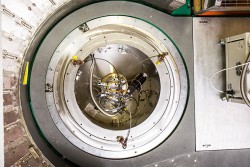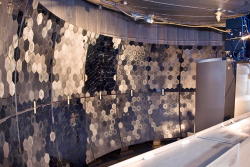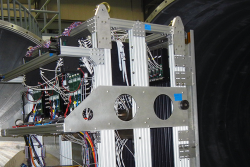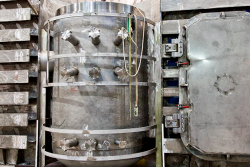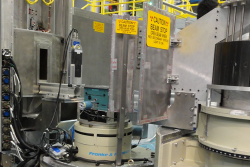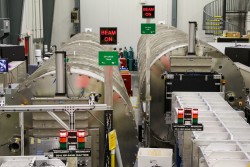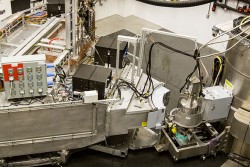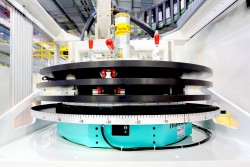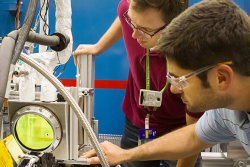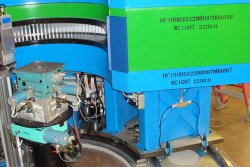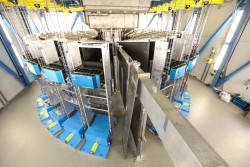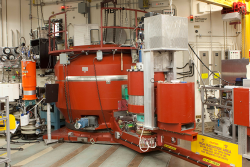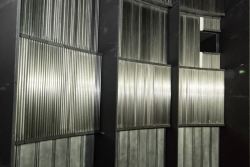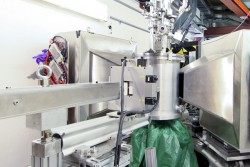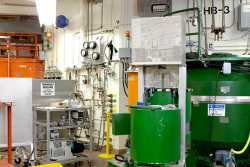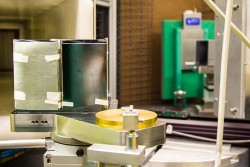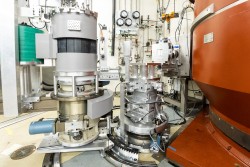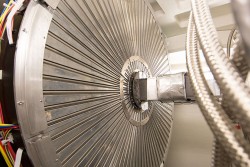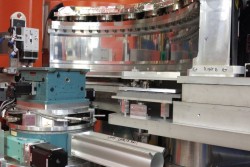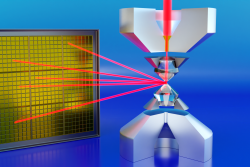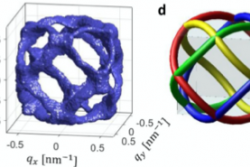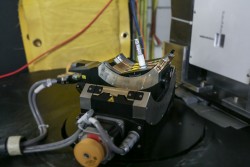Atomic-level dynamics in materials science, chemistry, condensed matter sciences
Physics of Matter under Extremes
The study of matter under extremes, especially when subjected to combined stimuli can lead to the discovery of new materials, the development of microstructures exhibiting enhanced performance or the emergence of novel properties [1]. In addition, the data obtained from measurements under these extremes provide valuable information for validating computational methods or training AI models. The importance of studies of materials under extremes is well recognized by the materials community [1] and by the department of Energy DOE [2]. As early as 2007 the need to tailor materials with designer properties and the development of new characterization tools under extremes figured prominently in 3 of DOE’s 5 science grand challenges.
Neutron scattering is a unique probe in the study of materials, combining sensitivity to low Z species and magnetic order, with a penetrating power that enables the development of sophisticated sample environment devices. Owing to the developments in neutron facilities over the last decade, the traditional paradigm that neutron scattering measurements require large samples and long collection times is rapidly becoming obsolete. Indeed, even the DOE BES Neutron Scattering research area emphasizes that “The program will develop novel approaches that exploit the uniqueness of neutron scattering to investigate emergent behavior in materials over a wide range of length, energy, and time scales. Innovative instrumentation concepts to observe materials in out-of-equilibrium conditions through correlation of neutron detection with driven changes of sample environment and concepts to analyze such measurements are particularly encouraged.”[3]. The science initiative dedicated to “Physics of Materials under Extremes” aligns itself squarely with these strategic aims, through coordination of research efforts from ORNL’s Neutron Scattering Division and when appropriate providing feedback to management regarding setting goals and defining long term strategies.Collaborations emerging from this initiative will explore how to best use the SNS and HFIR and its available resources, from state-of-the-art sample environment to sophisticated data reduction and analysis.
Many of these developments are already ongoing:
- Achieving neutron measurements at megabar pressures [4] positions us able to explore systems under the conditions of high temperature superconductivity.
- Measurements on pulsed magnets up to 30 T [5] allows the study of very complex magnetic phase diagrams.
- In-operando neutron diffraction during additive manufacturing [6] opens the prospect the control of texture in real time.
- Measuring the total scattering signal of levitating samples up to 2000 oC or higher [7] allows the best possible total scattering data on super-cooled metallic systems and bulk metallic glasses obtained from rapid quenching.
These are all exciting advances, but challenges remain: the increase spatial resolution of neutron measurements can allow the probing of material inhomogeneities and microstructures. In addition, the fast collection time afforded by the increased flux, combined with advanced techniques such as stroboscopic measurements -a key benefit of event mode data collection - will allow the detection of transient states.[8]
One final theme that will be explored is the study of materials under coupled extreme environments. This is key for example in the study nuclear and fusion materials, energetic systems and even bio-implants.[1c)] Advances in this area will require the most advanced developments in neutronics, sample environment, data reduction and computational tools.
[1] –MRS Bulletin “Materials in Coupled Extreme Environments” Vol 47 (11), November 2022. a) Silvestroni, L., Rueschhoff, L.M., Acord, K.A. et al. Synthesis of far-from-equilibrium materials for extreme environments. Pg. 1143–1153; b) Taheri, M.L., Carter, W. & Uberuaga, B.P. On the frontiers of coupled extreme environments. pg 1104–1112 (2022) and c) Zinkle, S.J., Quadling, A. Extreme materials environment of the fusion “fireplace” pg 1113–1119
[2] - https://science.osti.gov/bes/efrc/Research/Grand-Challenges:
- Grand Challenge #2:How do we design and perfect atom- and energy-efficient synthesis of revolutionary new forms of matter with tailored properties?
- Grand Challenge #3: How do remarkable properties of matter emerge from complex correlations of the atomic or electronic constituents and how can we control these properties?
- Grand Challenge #5:How do we characterize and control matter away - especially very far away - from equilibrium?
[3] - https://science.osti.gov/bes/mse/Research-Areas/Neutron-Scattering retrieved on March 2024
[4] - Haberl, B., Guthrie, M. & Boehler, R. Advancing neutron diffraction for accurate structural measurement of light elements at megabar pressures. Sci Rep 13, 4741 (2023).
[5] - H. Nojiri, S. Yoshii, et al., Phys. Rev. Lett. 106, 237202 –(2011)
[6] - Plotkowski, A., Saleeby, K., Fancher, C.M. et al. Nat Commun 14, 4950 (2023).
[7] - N. A. Mauro, A. J. Vogt, K. S. Derendorf et al. Rev. Sci. Instrum. 87, 013904 (2016)
[8] - G. E. Granroth, K. An, H. L. Smith, P. Whitfield et al. J. Appl. Cryst. (2018). 51, 616-629


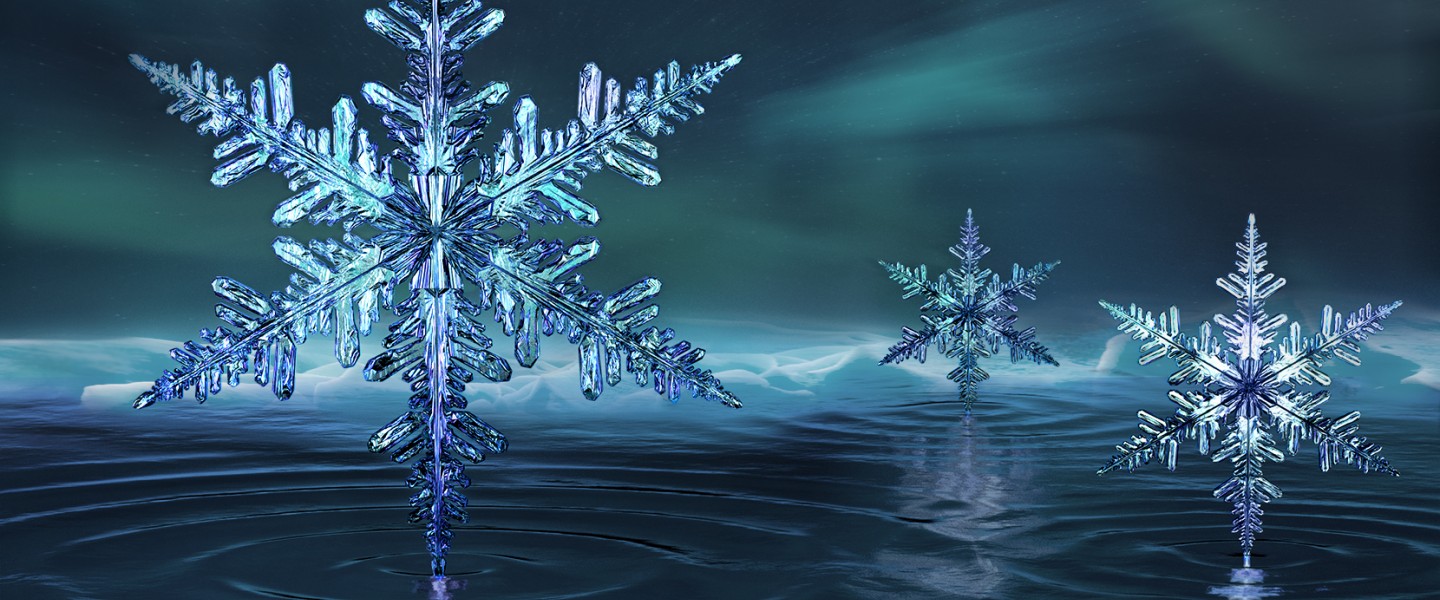
![Extreme stimuli that alone, or coupled, may result in materials with improved performance or exhibit new properties. adapted from [1-a)].](https://neutrons.ornl.gov/sites/default/files/AdvancedCharacterization.jpg)
